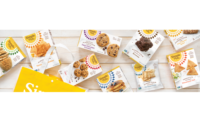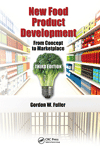How COVID-19 changed consumption trends: Interview with Zipline Logistics

Snack Food & Wholesale Bakery was recently able to talk to Andrew Lynch, president, Zipline Logistics, Columbus, OH, about how COVID-19 is changing consumers' shopping and consumption habits.
Liz Parker: How has COVID-19 affected consumers’ shopping habits?
Andrew Lynch: Since the outbreak of COVID-19 and the implementation of in-person event restrictions, consumers have reallocated their spending budgets away from experiential purchases, like vacations and dining, to consumer goods, groceries, and snack foods. We see especially dramatic increases in spend on specialty home items like baking supplies, cocktail mixers, home fitness equipment, and other items that reflect the desire to replicate or replace the experiential void in everyday life.
More importantly, it has dramatically accelerated trends that we’ve been witnessing for the past several years.
Namely, consumers slowly retreating from traditional brick-and-mortar stores in favor of retailers' online alternatives. Instead of shopping in stores, consumers have increasingly purchased these items through retailers’ online ordering options. Online grocery sales are up 10% compared to pre-pandemic statistics and shows no sign of substantially diminishing after the outbreak wanes.
LP: What are people purchasing or not purchasing this year?
AL: We’ve seen a huge influx in the purchasing of goods for households running the gambit from pantry items to personal exercise equipment. If people can use it at home, it’s being bought like never before.
That trend is reflected in our internal data where we’ve seen a 1207 percent increase in shipping volume of baking mixes, a 493 percent increase in coconut oil, and a 29 percent increase in broth shipments combined with a spike in snack food shipment volume of 50 percent.
Conversely, shoppers aren’t buying as much of the products we would associate with socializing. Cosmetic shipping volume was down 84% in year-over-year comparisons and heavily caffeinated beverages, like energy drinks, were down 50 percent.
LP: Why do you think baking mixes are up by 1207%?
AL: With many restaurants closed or subject to diminished operating capacity, U.S. consumers cooked most of their meals at home. When combined with people potentially having more leisure time and exploring new in-home hobbies during quarantine, we saw this spike in the purchasing of baking mixes.
Consumers have more time to try new things like baking and most view baked goods as comfort foods, which were a shopper favorite in the early stages of the pandemic.
LP: What else has changed trend-wise with the pandemic?
AL: An interesting trend that we witnessed early on was that consumers were buying comfort foods and big label products in volumes that outpaced previous years. Many shelf staples were bought up at record speed, leaving store shelves bare at some of the nation’s largest retailers.
That phenomenon was in direct contrast to the trend that has been prevalent in the industry for the past few years—emerging brands gaining market share and being predominantly favored by a large percentage of consumers.
Now that we’re closing in on a year since the outbreak, we’ve seen that reverse as consumers have again begun favoring emerging products. It’s led us to believe that COVID’s effects on consumers are not necessarily static but are instead dynamic with the ability to potentially change again before the virus is under control.
Looking for a reprint of this article?
From high-res PDFs to custom plaques, order your copy today!








